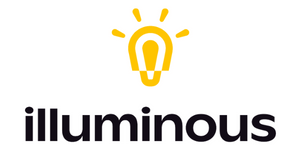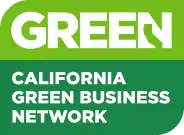Great. Super. Fantastic, but as a business owner, you might not know what type of content is right for your audience, especially if you are B2B. Don’t fall into the mindset that because your customers are other businesses, they won’t want engaging or interesting content from you. In fact, I would argue just the opposite. Who doesn’t want to be entertained and inspired while also doing their job or researching a new service? The key here is adding value.
Let’s look at some examples of content that can generate leads for B2B companies.
1. EBooks or White Papers
First, let’s talk about the difference between an eBook and a white paper. An eBook is an electronic book usually in PDF form that provides instructions on how to do something. For example, this ebook by Hubspot outlines how to measure ROI from your inbound marketing efforts. This is a great resource for any company or digital marketer that wants to see how much revenue they are generating by creating consumable content.
A White Paper is similar, but it contains data, statics, findings, or specs in a report format. This can be a very effective type of content for most businesses, especially in any technology field, which usually has a lot of data that clients can benefit from. For instance, if your business creates practice management software for Dental offices, you have an enormous amount of data on how many patients missed their appointments last quarter. You might also have data on how an enhancement to your appointment reminder application decreased missed appointments by 30%. That information, along with other improvement metrics, is the perfect thing to showcase in a white paper.
Well thought out eBooks and White Papers are excellent lead generators for your business if implemented correctly. Once you write out your content and have a designer make it reflect your brand, you’ll need to promote your new asset effectively via social media channels and in calls to action throughout your website. It is important to ask for a name and email address at the very least in order for a user to download this content. This gives you a count of how many people downloaded it and it also tells you how interested a person might be in your service. If they downloaded a white paper containing improvement metrics of your software, you can bet that it a warm lead that your salesperson should follow up with ASAP.
2. Tip Sheets
Tip sheets are a great way to provide value to your audience while using keywords about your business in a natural way. An example might be “5 Tips For Selling Your Business with Maximum Profits,” published by a financial analyst.
Many clients I talk to think that because of client privacy issues, such as in the financial or healthcare industries, they are automatically excluded from using Inbound Marketing tactics such as content marketing. While those industries may seem both “boring” and tricky type of business from a content perspective, there is plenty of value content can add when thought of creatively. The best place to start is a brainstorm of all your most frequently asked questions. Converting those into an actionable content plan with an editorial calendar will get you started on your path to generating leads online.
3. Webinars or Webcasts
A webinar is one of the most engaging ways that your business can provide value and authority to your target market. Although the audience may have several dozen or several hundred attendants, this type of live event gives your brand the chance to have 1 on1 interactions with the people you are trying to reach through Q & A sessions. And guess what? Those Q & A Sessions can often spawn even more ideas for content that your audience wants to know about. It’s like a live brainstorming session.
In addition to the live event, your business should leverage a recording of the webinar on your company Youtube channel for many reasons. First, you can send a link to the recording out to the attendees in case they would like to revisit the information you covered. Second, you can optimize the title and description of those videos so that they are more likely to come up in search results around that topic. Youtube has the 2nd largest search volume in the world after Google, so having a presence there is essential for small businesses. Searchers who find your video organically can then contact your business for more information regarding that topic and BINGO! you’ve got another lead.
Hopefully, these three ideas have gotten your creative juices flowing about types of content you can create for your business. As I mentioned, start with a brainstorm on all of those ideas and then organize them into a manageable schedule for yourself using this free editorial calendar template. I tend to suggest focusing on particular topics each month to give some continuity to the content, but that is not absolutely necessary if it doesn’t fit your needs.
Have you already used one or more of these three types of content? How did it work for you?







